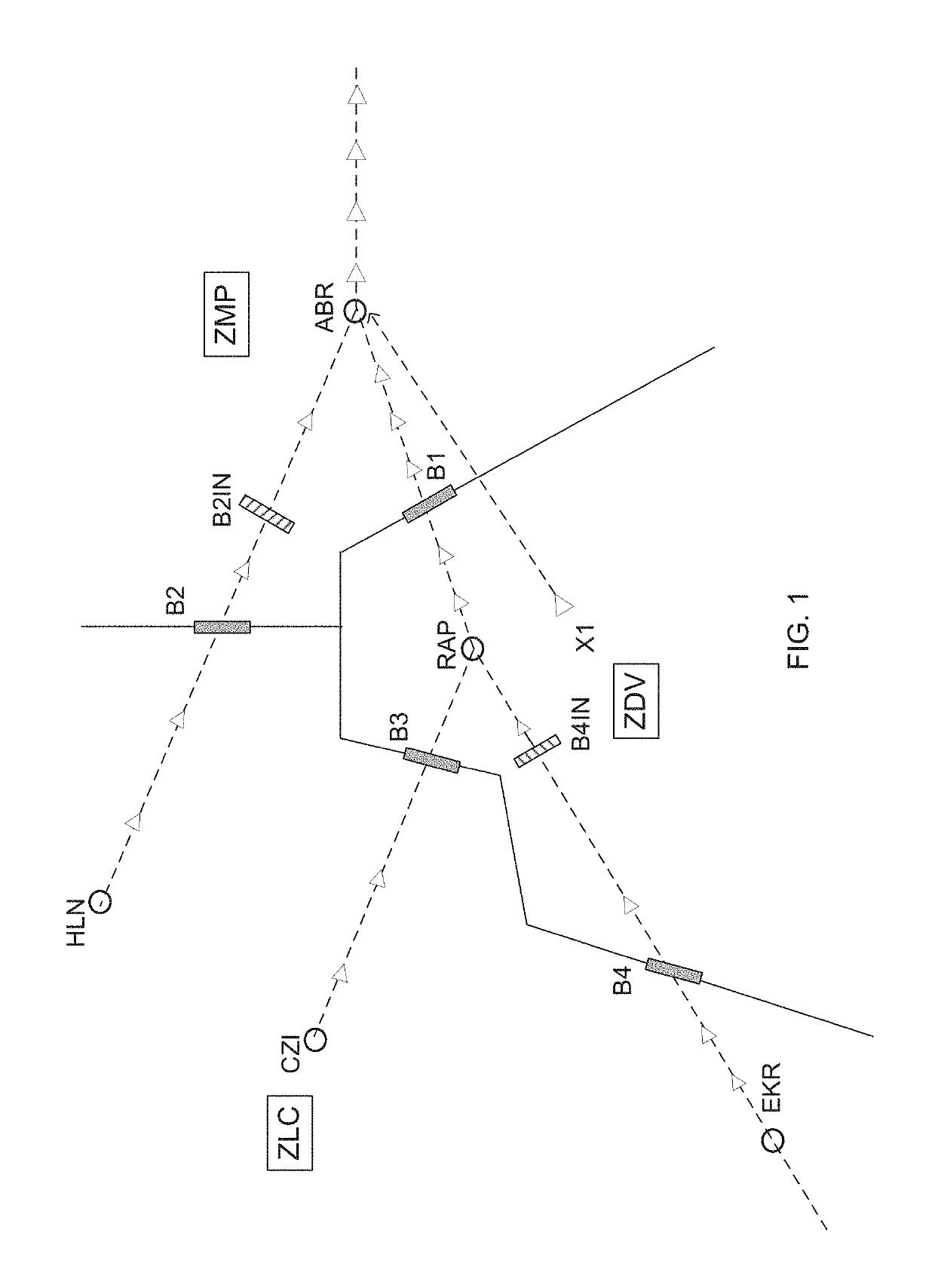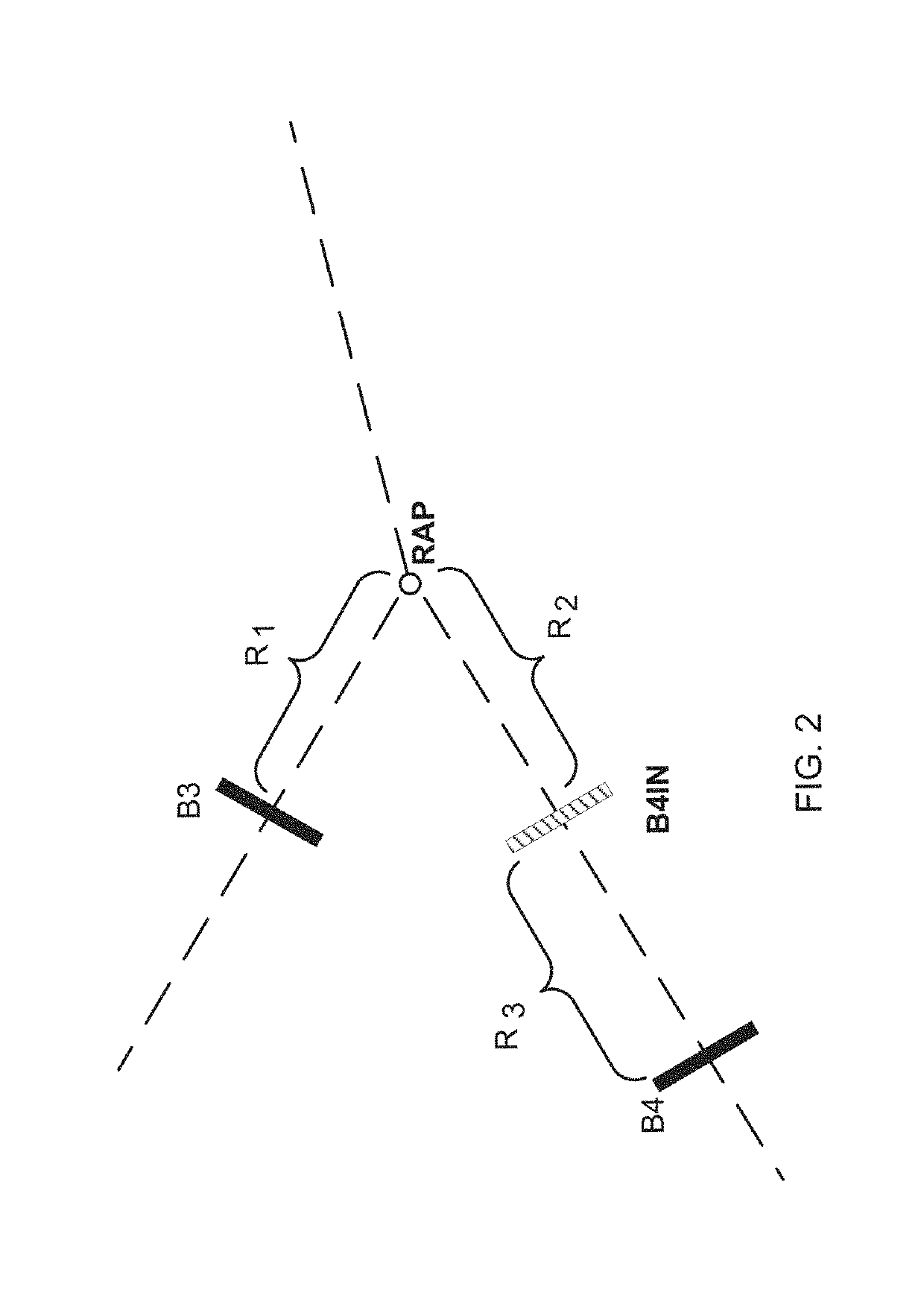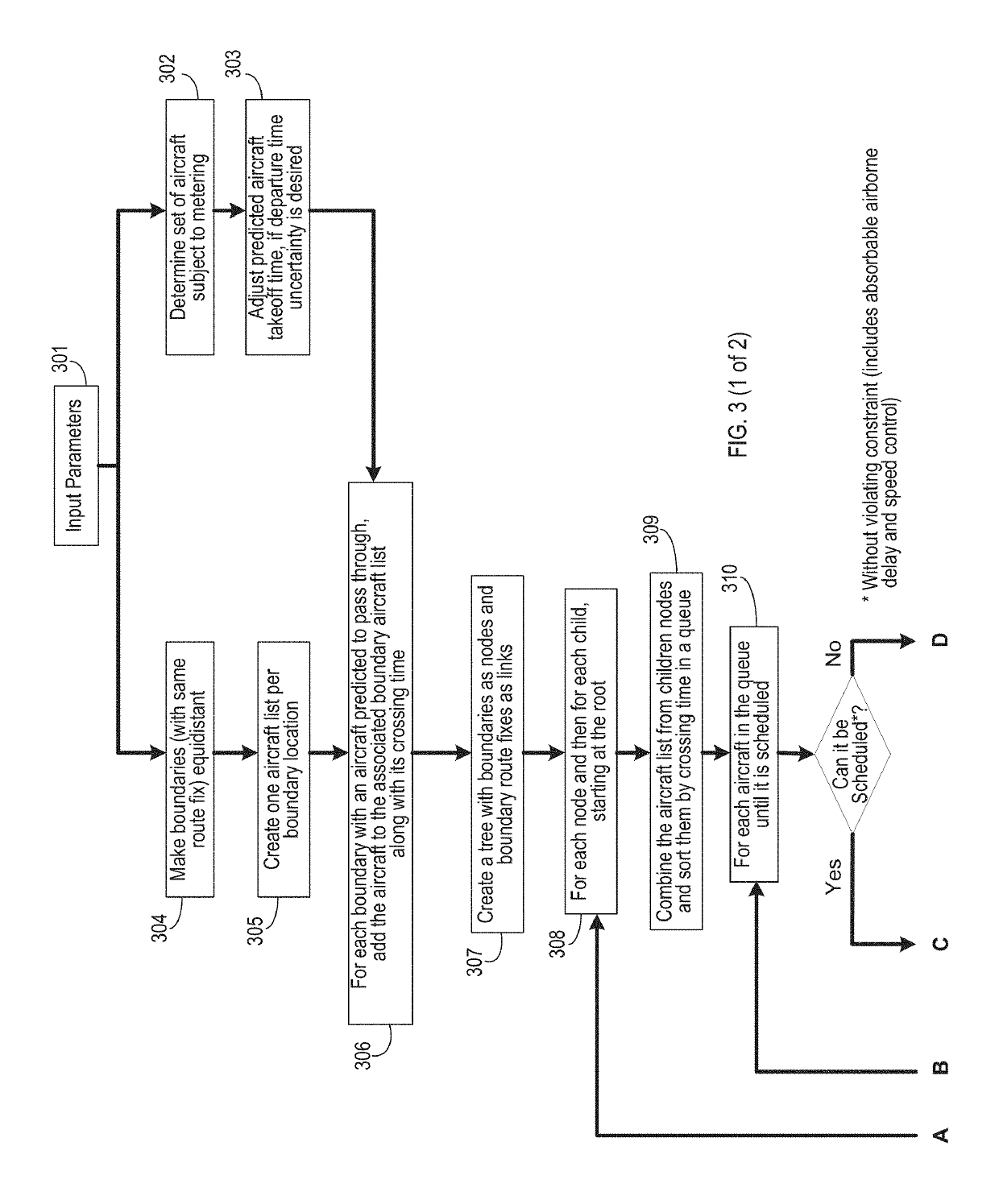Miles-in-trail with passback restrictions for use in air traffic management
a technology of air traffic management and restrictions, applied in aircraft traffic control, data processing applications, instruments, etc., to achieve the effect of reducing passback values and optimal air traffic throughpu
- Summary
- Abstract
- Description
- Claims
- Application Information
AI Technical Summary
Benefits of technology
Problems solved by technology
Method used
Image
Examples
Embodiment Construction
[0021]There are two critical shortcomings to the currently used approach of managing traffic by traffic managers. First, the previous system handled multiple streams of air traffic independently. This is problematic because in order to optimize the MIT calculation, each stream must consider others to which it may join. Second, the passback boundary locations (B1-B4) are at the boundaries of the ARTCCs. Consequently, they are not equidistant from their respective boundary locations on the other streams to which their stream will join.
[0022]FIG. 2 is a magnified view of the RAP area of FIG. 1. In FIG. 2, B4 is further from RAP than is B3. The invention described here uses the boundary that is the shortest distance from the immediate downstream common metered location as the reference distance and then adds a virtual boundary to streams further from the immediate downstream common metered location at the reference distance. In FIG. 2, since the distance from B3 to RAP (shown as R1) is ...
PUM
 Login to View More
Login to View More Abstract
Description
Claims
Application Information
 Login to View More
Login to View More - R&D
- Intellectual Property
- Life Sciences
- Materials
- Tech Scout
- Unparalleled Data Quality
- Higher Quality Content
- 60% Fewer Hallucinations
Browse by: Latest US Patents, China's latest patents, Technical Efficacy Thesaurus, Application Domain, Technology Topic, Popular Technical Reports.
© 2025 PatSnap. All rights reserved.Legal|Privacy policy|Modern Slavery Act Transparency Statement|Sitemap|About US| Contact US: help@patsnap.com



